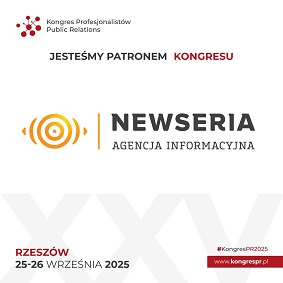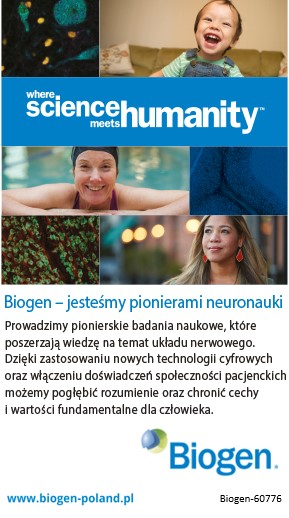From trash to catalyst: a single-atom strategy for carbon conversion
GA, UNITED STATES, May 12, 2025 /EINPresswire.com/ -- A recent study presents a practical approach to addressing both industrial waste and carbon emissions through material innovation. Researchers have developed a gas diffusion electrode (GDE) by repurposing waste proteins and heavy metals from industrial wastewater. These components are transformed into nickel single-atom catalysts (Ni SACs), which demonstrate high efficiency in converting carbon dioxide (CO₂) into carbon monoxide (CO). The electrochemical CO₂ reduction reaction (ECO₂RR) achieved a Faradaic efficiency of up to 96% and maintained stability under high current conditions. This approach not only reduces greenhouse gas emissions but also provides a resource-efficient use for industrial byproducts, supporting carbon neutrality and circular economy goals.
Organic waste and heavy metal-contaminated wastewater continue to pose environmental and health risks, while also contributing to carbon dioxide (CO₂) emissions. Current electrochemical CO₂ conversion technologies often depend on expensive materials and face limitations related to mass transfer in aqueous systems. Simultaneously, large quantities of protein-rich byproducts from the food industry remain underutilized. Many catalyst production methods are complex and face durability challenges in practical applications. In light of these limitations, there is a clear need for cost-effective, scalable, and environmentally friendly solutions that can convert waste streams into functional materials for carbon management.
A research team from Harbin Institute of Technology has explored this challenge in a study published in Frontiers of Environmental Science & Engineering on February 25, 2025. The team proposed a method to co-utilize soybean peptide wastewater and electroplating effluent, forming the basis for a new type of gas diffusion electrode. Using electrospinning followed by carbonization, they created a nanofiber-based gas diffusion electrode (GDE) embedded with nickel single atoms. This process simplifies catalyst fabrication while offering promising performance in CO₂-to-carbon monoxide (CO) conversion, contributing to sustainable energy systems and waste recovery practices.
The developed GDE is produced by integrating nitrogen-rich proteins and nickel ions into a porous nanofiber structure that promotes CO₂ transport and adsorption. The presence of nitrogen facilitates the formation of Ni–Nx active sites, which enhance the electrochemical reduction of CO₂. The electrode achieved high CO selectivity and Faradaic efficiencies above 90% across different current densities in both single-chamber and membrane electrode assembly systems. The structure was also stable under prolonged operation, with no evidence of nanoparticle aggregation—a common issue in other catalysts. Unlike traditional approaches, the protein-based GDE retained its performance without acid treatment, highlighting its operational simplicity and reliability. These findings offer a pathway to stabilizing single-atom catalysts using low-cost, waste-derived materials.
"Our study demonstrates that waste proteins can serve as effective building blocks for catalyst development," said Dr. Lu Lu, corresponding author of the study. "Through electrospinning and carbonization, we developed a practical way to prepare single-atom catalysts that combine high activity with environmental benefits. This method provides a useful strategy for linking waste utilization with carbon management." Dr. Lu emphasized the relevance of this work to circular economy frameworks, especially in recovering resources from underused waste streams.
The proposed method holds potential for wider adoption in carbon utilization systems, particularly in sectors generating organic and heavy metal waste. The protein-derived GDE can be applied in carbon capture and utilization (CCU) processes to produce CO for use in fuels or chemicals. On a larger scale, the approach could contribute to the recovery of an estimated 478 million tons of carbon and 5 million tons of heavy metals annually. Given the wide availability of protein-rich waste, this method offers a feasible and sustainable route for advancing low-emission technologies and improving industrial waste valorization.
References
DOI
10.1007/s11783-025-1974-y
Original Source URL
https://doi.org/10.1007/s11783-025-1974-y
Funding information
This work was financially supported by the National Natural Science Foundation of China (No. 22176046), the Science Fund for Creative Research Groups of the National Natural Science Foundation of China (No. 52321005), the Shenzhen Science and Technology Program (Nos. KQTD20190929172630447, JCYJ20210324124209025, and GXWD20220811173949005), and the Natural Science Foundation of Guangdong Province (No. 2022A1515012016).
Lucy Wang
BioDesign Research
email us here
Legal Disclaimer:
EIN Presswire provides this news content "as is" without warranty of any kind. We do not accept any responsibility or liability for the accuracy, content, images, videos, licenses, completeness, legality, or reliability of the information contained in this article. If you have any complaints or copyright issues related to this article, kindly contact the author above.
Shriners Children’s St. Louis Utilizing New Scoliosis Treatment to Help Patients Recover Faster
'A Chance to Trance' Hypnosis Event Comes to Bellevue – June 28
Los Angeles Tribune Global Magicians Hall of Fame Announces Full Lineup of Honorees, Performers, and Presenters
Kalendarium
Więcej ważnych informacji
 Jedynka Newserii
Jedynka Newserii

 Jedynka Newserii
Jedynka Newserii

Prawo

Przedsiębiorcy chcą uproszczenia kontroli celno-skarbowych i podatkowych. Wskazują na potrzebę dialogu z kontrolerami
Poprawa relacji z fiskusem i urzędnikami przeprowadzającymi kontrole to jeden z najczęściej podnoszonych postulatów przez przedsiębiorców. W ramach deregulacji prowadzonej przez rząd domagają się oni większej współpracy i otwartości na wyjaśnienia ze strony organów podatkowych, jasnej interpretacji przepisów, partnerskiego traktowania oraz skrócenia procesu przedawnienia. Te zmiany mogłyby poprawić atmosferę i klimat dyskusji między przedsiębiorcami a rządem.
Bankowość
Banki zainteresowane projektami gospodarki obiegu zamkniętego. Chętniej finansują takie inwestycje

Rynek zrównoważonego finansowania rośnie. Banki stawiają na rozwój oferty zielonych instrumentów, które przedsiębiorcy i inne instytucje mogą przeznaczyć na sfinansowanie inwestycji z różnych obszarów ESG. Są wśród nich zarówno zielone obligacje, jak i kredyty połączone z realizacją konkretnych celów klimatycznych. Jednym z obszarów, które chcą finansować firmy w ramach ESG, jest gospodarka obiegu zamkniętego, czyli zamykanie obiegu produktów w myśl zasady reduce, reuse i recycle (ogranicz, użyj ponownie, przetwórz).
Handel
E-papierosy i aromatyzowane saszetki nikotynowe mogą zniknąć z rynku. Ministerstwo Zdrowia chce całkowitego zakazu ich sprzedaży

W wykazie prac legislacyjnych pojawiła się nowa propozycja Ministerstwa Zdrowia, która przewiduje zakaz wprowadzania do obrotu papierosów elektronicznych jednorazowego użytku – zarówno tych z nikotyną, jak i bez niej, oraz zakaz stosowania aromatów w woreczkach nikotynowych. Projekt trafił do konsultacji społecznych. To już kolejna regulacja sektora tytoniowego w ostatnich miesiącach. Przedstawiciele biznesu podkreślają, że to chaos regulacyjny, który wpływa na brak poczucia pewności prawnej i decyzje inwestycyjne.
Partner serwisu
Szkolenia

Akademia Newserii
Akademia Newserii to projekt, w ramach którego najlepsi polscy dziennikarze biznesowi, giełdowi oraz lifestylowi, a także szkoleniowcy z wieloletnim doświadczeniem dzielą się swoją wiedzą nt. pracy z mediami.









.gif)

 |
| |
| |
|